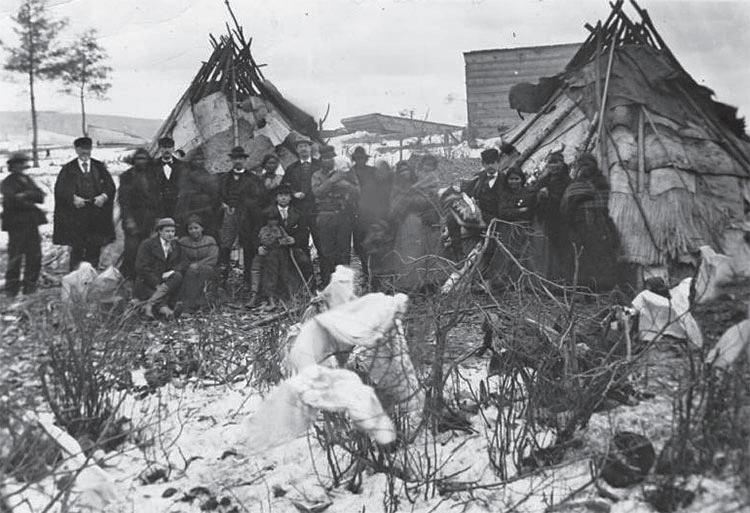
2 minute read
First residents
By Kelly Busche kbusche@duluthnews.com
The very first people on the land that is today called Duluth were here during the “Paleo Indian” phase, which lasted from approximately 11200 to 7500 B.C. Paleo-Indian people entered the area after the glaciers retreated around 14,000 years ago. They were known for large, leaf-shaped stone spear tips and knives. During their time, Lake Superior was much larger — extending up past where Skyline Parkway is today — and they lived along its shores.
Next came the Archaic period that ran until approximately 500 B.C. Limited information is available about this period, as Lake Superior had much lower water levels. As the lake eventually grew, it covered many remnants of the former residents.
The Woodland period comes next. The Woodland people, marked by a period from 1000 B.C. to A.D. 1750, stayed at their villages and campsites for longer periods of time, as reliable food sources were available nearby. They ate fish, mammals and wild rice, among other things.
It’s not exactly known when other tribes, including the Dakota and Anishinaabe tribes, migrated to the area. But they had their first interaction with French explorers in the 1600s. Many of their initial exchanges centered on the fur trade, with Native Americans trading furs for guns, knives, liquor, cloth and other manufactured goods.
Four tribes were located along the Great Lakes at the time. With a desire to promote trade in the region, French explorer Daniel Greysolon, Sieur du Luht, held a meeting among tribal leaders from the Dakota, Anishinaabe, Assiniboine and Cree tribes in 1679.
Around 100 years later, traders and settlers then began taking over the land, with the first fur post recorded by a fur trader in 1784.
Government officials then attempted to remove indigenous people from the area, resulting in the Treaty of 1854, in which the tribe ceded a significant portion of the Arrowhead region, and numerous reservations, including the Fond du Lac Reservation, were established.
A notable figure in the Anishinaabe community was Chief Buffalo, who signed the 1854 treaty. He was allowed to select one tract of land for himself and chose a section that now includes downtown Duluth, Lincoln Park, Canal Park and Central Hillside, but after his death in 1855 “others misrepresented and sold his claim,” according to the Fond du Lac Band.
As the place long known as Onigamissing (little portage) became Duluth with new residents arriving in droves, the federal government was going to war with tribes around the country and over the next century implemented policies of removal, mandatory boarding schools and termination (forced assimilation). The effects of those and other policies were and are still felt here and throughout the nation.
An ethnographic study of the indigenous contributions to Duluth undertaken by the city’s Indigenous Commission showed a widespread “belief among indigenous people living in Duluth that their presence and their history have not been visible to the wider population of the city and to visitors. Aside from highly public disputes about the revenues from the Fond du Luth casino, Native people do not believe that their contributions to the city, either in the past or today, have been appreciated.”
Attempts at reconciliation have been made, as seen at the renaming of Duluth’s Lake Place Park to Gichi-Ode’ Akiing this year, but the 2015 study said “a continuing problem of racism among non-Indians in Duluth would be the biggest obstacle to solving the problem of indigenous invisibility in the city.”










